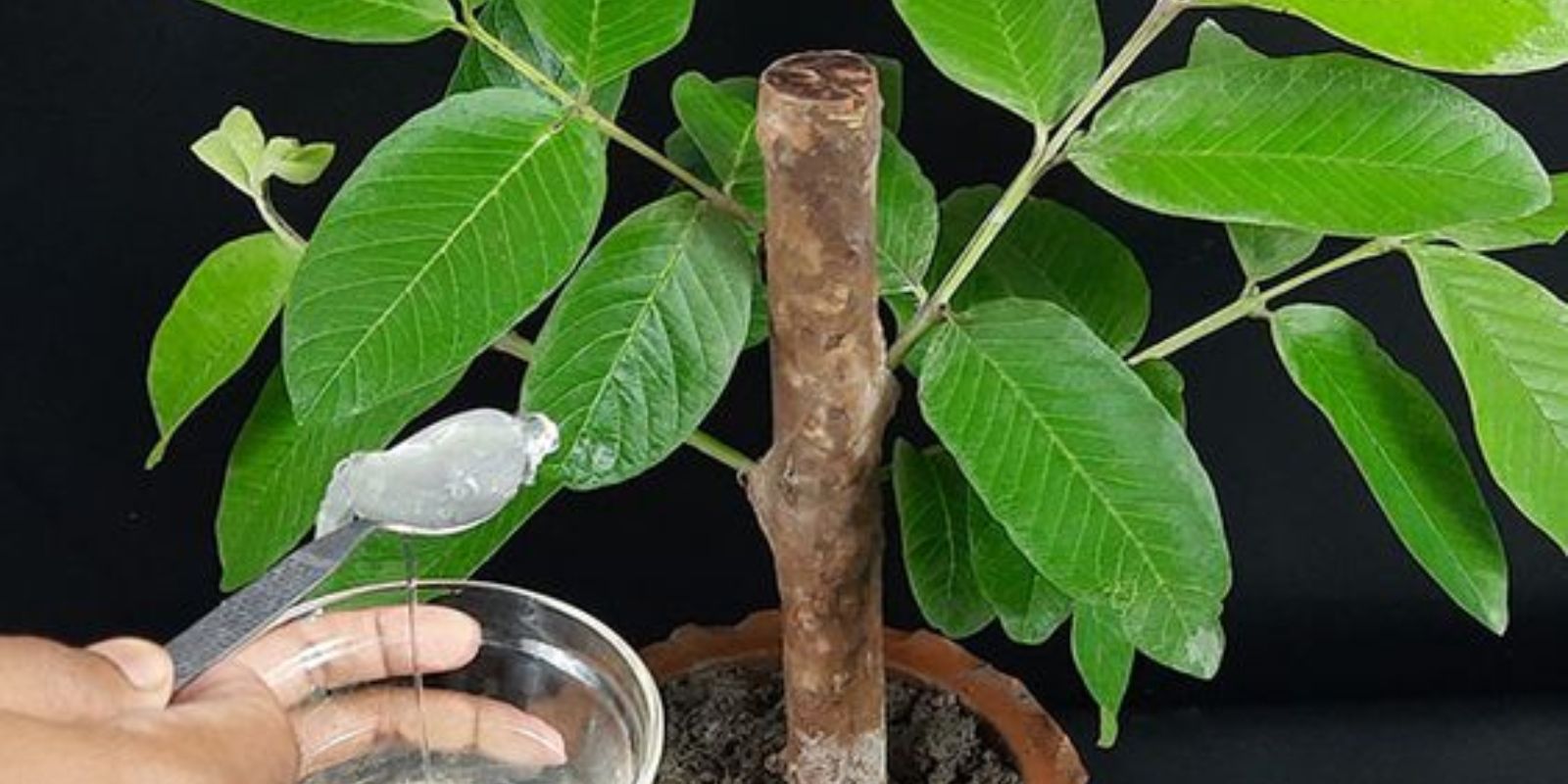Guava trees, celebrated for their luscious fruit and attractive foliage, are a fantastic addition to any garden. Propagating guava trees from cuttings is a cost-effective and straightforward method to expand your garden, especially when paired with Aloe vera, which can significantly enhance rooting success. This guide will walk you through the process, providing all the essential tips and steps needed for successful propagation.
Introduction
Propagating guava trees by cuttings is an excellent way to clone your favorite guava varieties and ensure consistent fruit quality. When done correctly, this method can yield strong, healthy plants that will thrive in your garden. By using Aloe vera as a rooting agent, you can improve the chances of your cuttings developing robust root systems, making your propagation efforts even more successful.
Materials Needed
Before you start, gather the following materials:
- Healthy Guava Cuttings: Select young, disease-free guava branches. They should be approximately 6-8 inches long with several leaves.
- Aloe Vera Gel: Fresh Aloe vera gel from the plant or a store-bought Aloe vera rooting gel.
- Pruning Shears: Ensure they are clean and sharp to make precise cuts.
- Potting Mix: Use a well-draining mix such as a combination of peat and perlite or sand.
- Pots or Containers: Choose pots with drainage holes to prevent waterlogging.
- Plastic Bag or Dome: This will help create a humid environment around your cuttings.
Step-by-Step Guide
1. Prepare the Cuttings:
The first step in propagating guava trees is to take the cuttings. Choose healthy guava branches that are about 6-8 inches long. The ideal cuttings should come from a vigorous, disease-free plant. Use clean, sharp pruning shears to make a clean cut just below a leaf node. Remove any flowers or fruit from the cuttings, as these can drain energy needed for rooting. Trim the leaves to leave just a few at the top, which helps reduce moisture loss.
2. Apply Aloe Vera:
Aloe vera is renowned for its natural rooting hormone properties. It can help speed up the rooting process and improve the overall health of your cuttings. If you’re using fresh Aloe vera, cut a leaf from the plant and extract the gel inside. Dip the cut ends of your guava cuttings into the Aloe vera gel, ensuring they are well-coated. If you’re using a commercial Aloe vera rooting gel, follow the instructions on the package for application. This step encourages the development of roots and increases the likelihood of successful propagation.
3. Plant the Cuttings:
Prepare your pots or containers by filling them with a well-draining potting mix. A mix of peat and perlite or sand is ideal for guava cuttings. Make small holes in the soil to accommodate the cuttings. Insert the treated ends of the guava cuttings into the holes, burying them about 1-2 inches deep. Gently firm the soil around the cuttings to provide stability.
4. Create a Humid Environment:
Guava cuttings need a humid environment to promote root development. Cover the pots with a plastic bag or a plastic dome to trap moisture and maintain a consistent temperature. This creates a mini-greenhouse effect that helps keep the cuttings moist and warm, essential conditions for rooting. Ensure the cover does not touch the cuttings to prevent mold growth.
5. Place in Indirect Light:
Position your pots in a location that receives bright, indirect light. Direct sunlight can be too intense and may cause the cuttings to dry out or suffer from heat stress. A sunny windowsill with filtered light or a spot under grow lights works well. The ideal temperature for rooting is between 70-80°F (21-27°C), which encourages the cuttings to develop roots more quickly.
6. Monitor and Water:
Regularly check the soil moisture to ensure it remains consistently moist but not waterlogged. Overwatering can lead to root rot and other issues, so it’s crucial to maintain the right balance. Water the cuttings lightly when the top inch of soil feels dry. Remove the plastic cover periodically to allow fresh air to circulate and prevent mold growth.
7. Check for Root Development:
After a few weeks to a couple of months, you should start to see signs of new growth, indicating that roots are forming. Gently tug on the cuttings to check for resistance, which suggests that roots have developed. You may also see new leaves sprouting from the cuttings. Once you observe healthy root development, it’s time to prepare for transplanting.
8. Transplanting:
When the cuttings have established a strong root system, you can transplant them into larger pots or directly into the garden. Choose a sunny location with well-draining soil for garden planting. If transplanting into pots, use a high-quality potting mix and ensure the pots have adequate drainage holes. Gently remove the cuttings from their propagation pots, being careful not to damage the roots. Plant them at the same depth as they were in the pots and water thoroughly.
9. Care and Maintenance:
Once transplanted, continue to care for your guava trees by watering them regularly and providing adequate sunlight. Fertilize every 4-6 weeks with a balanced fertilizer to support healthy growth. Protect the plants from pests and extreme temperatures. Regular pruning may be necessary to shape the plants and encourage vigorous growth.
10. Enjoy Your Guava Trees:
With patience and proper care, your propagated guava trees will grow into mature plants, eventually producing delicious fruit. Enjoy the process of nurturing your guava trees from cuttings and take pride in the fruits of your labor. Share your success and experiences with fellow gardeners to inspire others to try their hand at propagation.
Conclusion
Propagating guava trees using cuttings and Aloe vera is a rewarding and effective method for expanding your garden. By following these simple steps and providing the right care, you can enjoy healthy, thriving guava trees that will enrich your garden and your palate. Happy gardening, and may your guava propagation efforts be fruitful and fulfilling!

